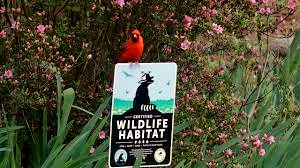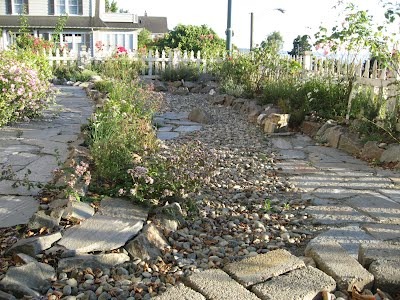5 Key Elements Essential for a Healthy Wildlife Habitat
- Whispering Wind Ranches
- Feb 23, 2023
- 6 min read
Let’s explore examples of how to incorporate these 5 essential elements into your space; whether your space is large as a farm or small as a balcony or patio, size does not matter! Someone could have a full acre of manicured lawn, with roses, floweing bushes, hedges, award winning tulips or daisies and still not qualify to be a Certified Wildlife Habitat. They may be missing some important element like a water source, or use pesticides that destroy life. On the other hand, a 100 square foot garden might be capable of providing all the things needed to sustain and nurture wildlife. Sure, maybe not all sizes of wildlife, but some. Some is better than none! Absolutely!
Sustainability is key to the success of any habitat. Why? Because if you don’t treat your garden in a sustainable manner, the rest of this is a moot point. There are many types of sustainable practices and I could write about this all day; however the types of sustainable practices that are encouraged to become a Certified Wildlife Habitat include going Organic by discontinuing the use all any and all non-organic pesticides (especially broad spectrum pesticides including: organophosphate (malathion, dimethoate), carbamate (Sevin, Lannate), pyrethroid (Baythroid, Danitol), and neonicotinoid (Admire, Assail) insecticides.), fertilizers, or any other synthetic chemical products on your property. This also includes poison for pests, like rat bait. Rodent poison poses a huge risk for wildlife (and to people and pets)! Furthermore, only use products that are approved for “certified organic” gardening as a last resort. Yes they are more expensive, but with a little internet research we can find natural products which are widely available to assist us in this .we can also encourage beneficial insects and natural predators, use physical pest control methods, and other mechanical means to manage pests and disease. The National Wildlife Federation promotes the use of Integrated Pest management (more on this later), so do we! Compost Compost and more Compost. Reduce your waste, recycle your garden and kitchen trimmings, and create natural organic fertilizer to use in your habitat!
Native plants are those species that are indigenous your area. They are best in your climate and will grow naturally. Further, local wildlife is familiar with native plants.As much as possible, seek plants that are hyper-local to your region. Also seek plants that provide fruit, nuts, seeds and flowers for insects and wildlife in your specific region.
Creating healthy soil and implementing water-wise practices benefit your micro-ecosystem. Use mulch over exposed soil areas to reduce erosion and retain moisture naturally. Choose drought-tolerant plants, and set up rainwater capture systems. Dont rely on inefficient overhead sprinklers or misters convert as much as you can to drip or soaking irrigation. limit, reduce, and eliminate lawn areas with should completely negate the need for spray irrigation, and eliminate water demand. There is no benefit to wildlife from a manicured lawn! Sustainability replaces grass with food, flowers and shelter.
A Certified Wildlife Habitat provides food for wildlife. The best way to provide food for wildlife is to plant edible trees, shrubs, and other plants in your garden! However, “edible” means something very different to humans as it does to wildlife. Even plants that are inedible for humans are great fests for some wilflife, and are easy to grow. A Certified Wildlife Habitat is required to provide at least three varieties of food sources for wildlife. You can easily chieve this by:
Planting flowers (or flowering plants) which provide nectar and pollen for bees, bats, butterflies, moths, and even some birds. This can include annual flowers, perennials, and even large shrubs and trees that produce pollen or nectar.
Birds love eating seeds from dried flower heads, including coneflower, sunflower, daisies, zinnias, and more. Allow some of your dead and dying flowers to stay and go to seed. Stop mowing! Native grasses and weeds provide flowers and then a lot of valuable meals as seed after.
Decaying wood, mulch, and leaves are food for insects, mosses and fungi, which in turn, feeds wildlife! I bet you never thought you could be creating ahabitat AND getting out of so many chores! This is the number 1 reason to go organic and stop using broad-spectrum pesticides. Wildlife which feed on insects will help keep the pest insect populations under controll naturally. When their tummies are full with protien dense insects or other wildlife lower on the food chain, they’re less likely to turn to your edibles!
In addition to natural food sources, you can also include the use of bird feeders with seed, hummingbird feeders with nectar, squirrel feeders, suet treat blocks, and more. Keep in mind these are to be used as supplemental sources when food is sparse. They key is to supplement; not make wildlife dependant.
All life needs water for survival. Water makes our planet unique, lush, and able to sustain life. Wildlife utulized water to drink and even for bathing. Even more, certain aquatic organisms, insects, or amphibians need it to reproduce. To qualify as a certified wildlife habitat, your space will need to incorporate at least one water feature. This could be fountains, bird baths, bee/insect waterers, ponds, flowing streams and what ever else you can imagine! Pumped, circulating water in a small fountain should prevent mosquitoes from breeding, but this is a definite concern in stagnant water. Therefore, consider adding mosquito fish or other natural mosquito larvae predators in small ponds. Frogs and lizards will help too!
Just as we need our human homes to feel safe and secure, wildlife needs shelter for protection during extreme weather, and cover to hide from predators. Also, for making dens or places to leave their young while they hunt for food and necessities. Various members of the wildlife community will utilize different forms of shelter and cover, so try to provide a variety of options. To become a Certified Wildlife Habitat, your space must include at least two forms of shelter. Here are some examples of shelter and cover for wildlife:
Trees, thickets, or a wooded area. Mature evergreen trees are especially useful, but any and all trees will do! If you’re in the beginning stages of transforming your space, plant trees first since they take the longest to get established. If you need some help in deciding what type of trees to plant in your garden, contact the Arbor Day Foundation, your local County Extension Office, or even your local Fish and Game.
Thick shrubs, vines, or brush piles. Forget the chores!!! Allow some areas of your yard to get nice, dense and even over grown for wildlife.
Lawn provides very little shelter or cover for wildlife, except maybe worms and grubs. Get rid of that useless lawn and replace it with shrubs, annual flowers, wildflowes, tall native grasses, garden beds, vegetables and/or mulch ground cover. Even if you aren’t interested in removing all of your grass, create wild areas around the perimeter of the yard. Or, consider tall native no or low-mow grasses.
Fallen logs, burrows, hollowed out stumps, caves, boulders, dry creeks and rock walls create excellent hiding places for a range of wildlife. Butterfly-lovers can create enclosures to provide the larvae shelter from predators during their journey from caterpillar to butterfly.
Water gardens, streams, or ponds provide shelter for amphibious and aquatic wildlife as well as water for butterflies, dragon flies, lady bugs, spiders, bees and other insects.
Implement all of these wildlife friendly practices in our habitats, we need to also ensure that our new inhabitants can successfully continue for future generations by providing habitat for all stages of their life cycle. A Certified Wildlife Habitat is expected to have at least two types of habitat for wildlife to reproduce and raise their young.
Wildlife can raise their young in all of the same shelter and cover examplesdiscussed above, but here are some additional considerations:
Be careful and use caution when pruning trees, shrubs, and vines especially during active bird nesting seasons. Do not disturb nests in the making or nests with eggs.
Bird houses provide perfect nesting space; place themaway from the majority of predators and your trimming shears. Most birds will not reuse nests and instead prefer a fresh space to start over, so it is best to clean out your birdhouse after each brood and at the end of each family season.
Owl boxes provide a safe place for owls to nest and raise young. Owls are natural rodent control for your house, ranch or farm. Look into what types of owls are most common in your area, since each species has slightly different preferences for the size, location and style of owl box. Utilize the Fish and Game Commission in your area and participate in their, often free, programs.
If you are interested in building and hanging bat houses, be mindful that their preferred orientation is south or east, hung 12 to 20 feet high against a structure. The Bathouse should receive at least 6 hours of sunlight per day. Bats are awesome predators of mosquitoes and other pesky insects.
Provide host plants for caterpillars to reproduce and turn into butterflies. Monarch caterpillars eat milkweed and onl milkweed. Swallowtails eat on a wide variety of plants, including dill, parsley, carrot greens, and fennel. The Arbor Day Foundation has a huge list and selection of butterfly attracting plants, bushes and trees that are suitable for planting in your area. Local garden clubs are also great libraries of wealth.
As you can see whether you are in a urban area or out in the rural reaches; you can easily create a habitat that is sustainable and heathy to wildlife around us. Its just not about living in nature.. its about creating a habitat where we can live with nature!


















